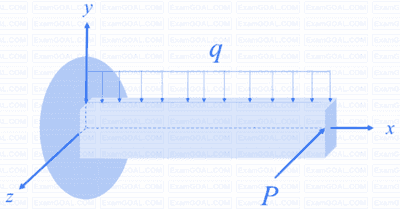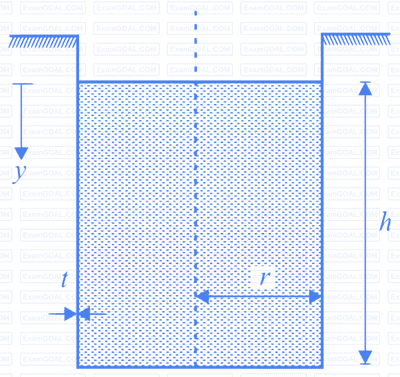A beam of length 𝐿 is loaded in the 𝑥𝑦 −plane by a uniformly distributed load, and by a concentrated tip load parallel to the 𝑧 −axis, as shown in the figure. The resulting bending moment distributions about the 𝑦 and the 𝑧 axes are denoted by 𝑀𝑦 and 𝑀𝑧 , respectively.
Which one of the options given depicts qualitatively CORRECT variations of 𝑀𝑦 and 𝑀𝑧 along the length of the beam?

The figure shows a thin-walled open-top cylindrical vessel of radius 𝑟 and wall thickness 𝑡. The vessel is held along the brim and contains a constant-density liquid to height ℎ from the base. Neglect atmospheric pressure, the weight of the vessel and bending stresses in the vessel walls.
Which one of the plots depicts qualitatively CORRECT dependence of the magnitudes of axial wall stress (σ1) and circumferential wall stress (σ2) on 𝑦?

Cylindrical bars P and Q have identical lengths and radii, but are composed of different linear elastic materials. The Young’s modulus and coefficient of thermal expansion of Q are twice the corresponding values of P. Assume the bars to be perfectly bonded at the interface, and their weights to be negligible.
The bars are held between rigid supports as shown in the figure and the temperature is raised by Δ𝑇. Assume that the stress in each bar is homogeneous and uniaxial. Denote the magnitudes of stress in P and Q by σ1 and σ2, respectively.
Which of the statement(s) given is/are CORRECT?

Ignoring the small elastic region, the true stress (𝜎) – true strain (𝜀) variation of a material beyond yielding follows the equation 𝜎 = 400𝜀0.3 MPa. The engineering ultimate tensile strength value of this material is ________ MPa.
(Rounded off to one decimal place)







